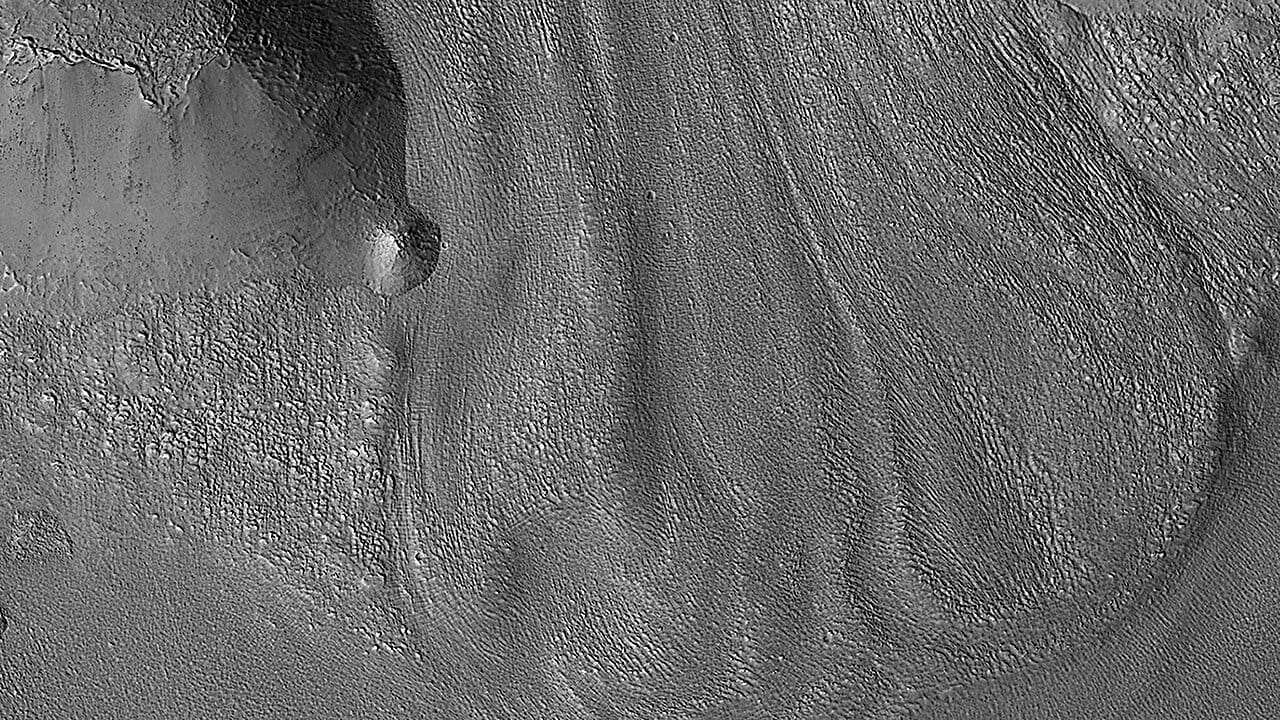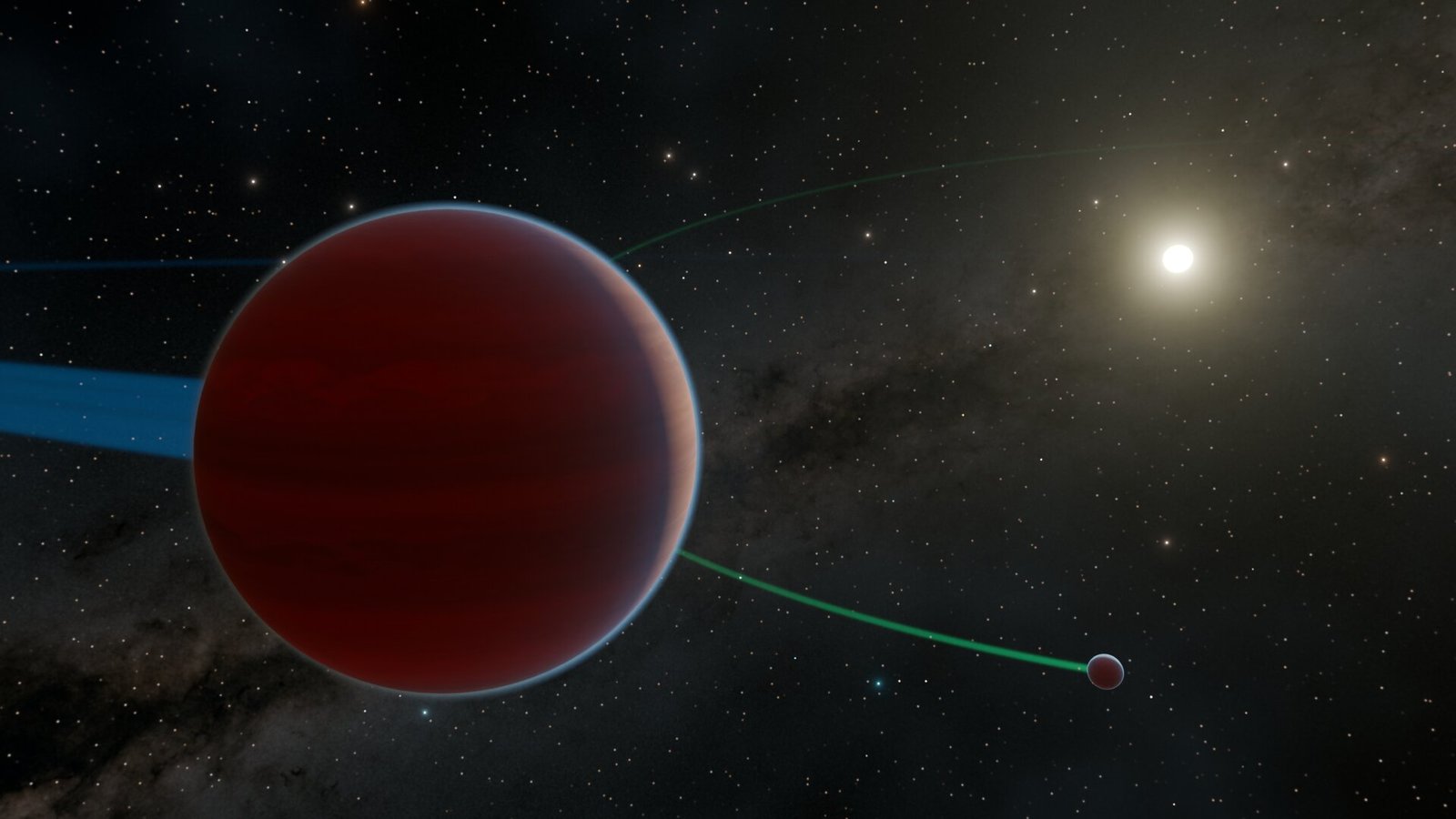High upon the scarred shoulders of Martian mountains and along the deep curves of its ancient craters, something clings like time itself: slow, silent, and haunting. These ghostly formations, frozen in motion and dusted with the fine red silt of a dead world, resemble rivers stopped mid-flow—shaped like honey poured too slowly. Their outer skins are dull and grayish, crusted with debris, but within them lie secrets stretching back millions of years. For decades, planetary scientists debated what these structures truly were—solid rock wrapped in a thin glaze of ice, or perhaps something more volatile beneath the surface.
Now, with new data and sharper radar eyes, scientists are finally lifting the veil on these enigmatic features. And what they’re finding is astonishing: these Martian glaciers are not just ice-laced rock—they are, in fact, vast reservoirs of nearly pure water ice hiding just beneath a dusty crust.
According to a new paper published in Icarus, these dusty glaciers—once assumed to be composed mostly of rock with minor icy inclusions—are actually composed of more than 80% ice. This discovery reshapes what we know about Mars’ climate history and delivers powerful implications for future human missions. Mars, it turns out, is not as dry and barren as it first appears.
Digging Into the Martian Heart with Radar
This breakthrough is the result of a detailed study led by Yuval Steinberg, a recent graduate of the Weizmann Institute of Science in Israel. Working alongside veteran planetary scientists Oded Aharonson and Isaac Smith, Steinberg used radar data gathered from Mars’ orbit to peer beneath the dusty camouflage that conceals the planet’s glacial remains.
But interpreting Martian glaciers is no simple task. Unlike Earth, where a glacial tongue might gleam white and obvious from afar, Martian glaciers are shrouded in mystery. Their surfaces are coated in dark debris—layers of pulverized rock and dust carried by ancient landslides, volcanic activity, and wind. Visually, these formations look little like our idea of ice. They blend into the terrain like camouflaged creatures waiting to be discovered.
The team’s secret weapon was SHARAD—the SHAllow RADar sounder onboard NASA’s Mars Reconnaissance Orbiter. This sophisticated instrument sends radar pulses deep beneath the Martian surface, allowing scientists to measure how those signals behave inside different materials. By carefully analyzing the dielectric properties and “loss tangent” values (essentially, how the radar signal slows down and weakens as it passes through ice and rock), they could estimate how much of each glacier is solid rock versus how much is water ice.
What made this study different was not just the use of radar—it was the way the team approached it. Until now, scientists had studied Martian glaciers piecemeal. Each site used a different method, different assumptions, and different types of analysis. The result was a patchwork of data that didn’t line up.
So, Steinberg and his team decided to standardize everything—bringing together five different glacial sites on Mars, spanning both hemispheres, and analyzing them with a uniform method. What emerged was nothing short of planetary-scale coherence.
The Ice is Everywhere—and It’s Almost All Water
What stunned the researchers most was the consistency. Despite being located in different regions, despite differing surface features and latitudes, all five glaciers showed nearly the same dielectric signatures. That means their internal compositions were almost identical—and composed primarily of water ice. Not just partially, not marginally, but over 80% in each case.
This high degree of purity had never been confirmed before. It paints a new picture of Mars, not as a dry and desolate wasteland but as a planet with a complex, frozen past and a potential future tied to its hidden water reserves. Ice is the ultimate time capsule. On Earth, glacial cores reveal ancient atmospheric data, climatic swings, and even trapped organisms. On Mars, these glaciers may hold the memory of a planet that once knew liquid water, snow, and perhaps even weather patterns not so unlike Earth’s.
“This is important because it tells us that the formation and preservation mechanisms are probably the same everywhere,” said Isaac Smith, one of the senior scientists on the study. “From that, we can conclude that Mars experienced either one widespread glaciation or multiple glaciations that had similar properties.”
In other words, these glaciers didn’t happen by accident. Mars likely went through planet-wide shifts in its climate—episodes of cooling, perhaps snowfall, and the slow formation of thick glacial sheets, just like Earth did during its Ice Ages.
The Ghost of Mars’ Watery Past
Understanding these glaciers offers more than just compositional clarity—it offers clues about Mars’ past. The presence of globally consistent glaciers suggests that the Red Planet underwent major climate transitions. Though its atmosphere is now thin and frigid, this wasn’t always the case.
For glaciers to form, you need snowfall or some other kind of ice accumulation, likely during a time when Mars’ axis tilted differently, or when volcanic activity warmed localized regions. The planet’s obliquity—its axial tilt—shifts far more dramatically than Earth’s due to the lack of a large stabilizing moon. These massive shifts may have triggered climatic cycles that allowed for the accumulation of snow and ice, which then crept downslope as glaciers.
And then, as temperatures dropped or the atmosphere thinned, those glaciers became entombed—slowly buried under dust storms and rockfalls, protected from sublimation (the process of ice turning directly into vapor). Today, they sit like time-bombs of knowledge, waiting to be drilled, studied, and—someday—perhaps used.
Glaciers for a Future Mars
The implications for human exploration are profound. Ice is not just a clue to Mars’ past—it’s a resource that could shape its future.
When the first human settlers arrive on Mars, they won’t be bringing water from Earth. They’ll need to extract it from the land—“in-situ resource utilization” is the term NASA uses. These newly mapped, nearly pure glaciers offer a tantalizing promise: clean, accessible water, buried just beneath a few meters of dust. Water that can be melted, purified, turned into drinking supplies, used for agriculture, or split into hydrogen and oxygen for rocket fuel and breathable air.
From a mission-planning perspective, knowing where the purest ice is could determine where we land, where we build, and how long we can stay. Previous assumptions had held that Martian ice might be hard to extract—intermixed with rock, or limited to deep polar regions. This new study shows that even mid-latitude regions, far from the poles, hold pure glacial ice.
“This helps when planning for future human exploration of Mars, when using local resources, such as water, becomes mission-critical,” said Smith.
And there’s more to come. The team is now looking to expand their database—to identify more glaciers across Mars, to refine their techniques, and to further understand the intricate dance of ice and dust across Martian time.
A World Beneath the Surface
Mars is often thought of as barren—its rust-colored plains and jagged cliffs echoing a planet that once lived and then simply stopped. But beneath the dust, there is motion. Beneath the debris, there is memory. And hidden beneath the frozen surface, there is water—real water, in abundance.
This study doesn’t just shift our understanding of Martian geology; it elevates our imagination. Mars is not just a place of rocks and wind but a planet that has held on to its ice for millions of years, quietly preserving a record of its most intimate atmospheric stories.
And now, we’re finally learning to listen.
Reference: Yuval Steinberg et al, Physical properties of subsurface water ice deposits in Mars’s Mid-Latitudes from the shallow radar, Icarus (2025). DOI: 10.1016/j.icarus.2025.116716






